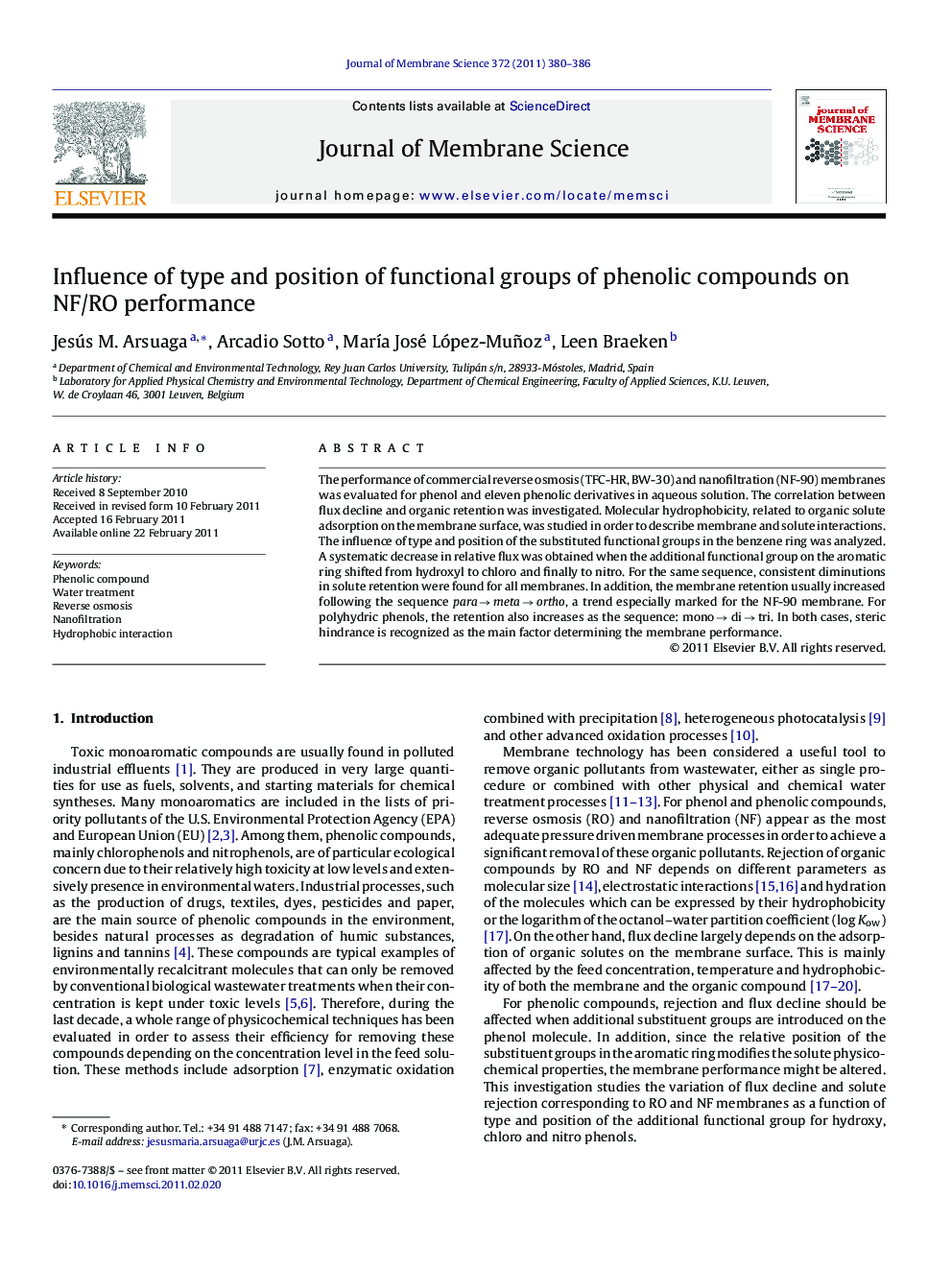| Article ID | Journal | Published Year | Pages | File Type |
|---|---|---|---|---|
| 635485 | Journal of Membrane Science | 2011 | 7 Pages |
The performance of commercial reverse osmosis (TFC-HR, BW-30) and nanofiltration (NF-90) membranes was evaluated for phenol and eleven phenolic derivatives in aqueous solution. The correlation between flux decline and organic retention was investigated. Molecular hydrophobicity, related to organic solute adsorption on the membrane surface, was studied in order to describe membrane and solute interactions. The influence of type and position of the substituted functional groups in the benzene ring was analyzed. A systematic decrease in relative flux was obtained when the additional functional group on the aromatic ring shifted from hydroxyl to chloro and finally to nitro. For the same sequence, consistent diminutions in solute retention were found for all membranes. In addition, the membrane retention usually increased following the sequence para → meta → ortho, a trend especially marked for the NF-90 membrane. For polyhydric phenols, the retention also increases as the sequence: mono → di → tri. In both cases, steric hindrance is recognized as the main factor determining the membrane performance.
Research highlights► There is a fair correlation between flux decline and phenolic compound retention. ► Permeate flux and solute retention decrease in the order hydroxy → chloro → nitrophenol. ► Within each isomers group, solute retention increases as para → meta → ortho.
